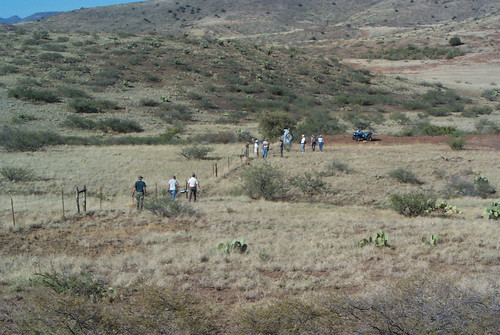
A popular new year’s resolution is to de-clutter our homes. But what if a clutter-free home was the only way you could survive and thrive?
Across Arizona, there is wildlife living in grasslands impacted by poorly-planned fencing and woody invasive brush. Invasive plant species, such as pinion juniper and mesquite that grow and spread quickly, create obstacles in grassland habitats that make it difficult for pronghorn and other migratory, grassland-dependent species to avoid predators.
Further, these invasives crowd out native grasses that provide food for wildlife and livestock, reduce soil erosion and help soil absorb precipitation, which is vital to replenishing supplies of groundwater and improving water quality.
USDA’s Natural Resources Conservation Service (NRCS), the Arizona Game and Fish Department, Arizona Department of Agriculture, Arizona Department of Environmental Quality, the U.S. Fish and Wildlife Service and other partners are working together to restore grassland habitat across Arizona through the Regional Conservation Partnership Program (RCPP).
In the first year alone, through RCPP, the partnership modified more than 28 miles of fence on the eastern and southern Arizona grasslands. By replacing existing fence with wildlife-friendly fencing, migrating wildlife are now able to travel easily among grasslands. Nearly 14,500 acres of wildlife habitat have been restored to native grasslands. Forty watering facilities were added across the project area, making water available to 320,000 acres of wildlife habitat.
These coordinated partnership efforts make funds for the projects go further and also make sure that the agencies do not duplicate each other’s efforts. “Because our field offices talk regularly with local partners during the planning process, we can avoid unintentionally duplicating each other’s work,” said Emily Fife, NRCS’ assistant state conservationist for programs in Arizona. “RCPP provides us the framework we need to work together.”
These conservation efforts are good for the overall environmental health of the ecosystems, and the economic health of nearby communities through recreation available in wildlife habitat.
“The RCPP allows us to focus our efforts on a larger landscape with several landowners, rather than a single landowner,” said NRCS state biologist Stu Tuttle. “This broad impact helps keep Arizona wildlife off the Endangered Species List through the recovery of their habitat.”
Since 2014, NRCS has invested a total of $825 million in 286 RCPP projects nationwide, bringing together more than 2,000 conservation partners who have committed an estimated $1.4 billion in financial and technical assistance.
Secretary Vilsack today announced USDA is accepting pre-proposals for Fiscal Year 2018 RCPP funding. NRCS will award up to $252 million dollars to locally driven, private-public partnerships that improve the nation’s water quality, combat drought, enhance soil health, support wildlife habitat, and protect agricultural viability.
Pre-proposals are due April 21. For more information on how to apply, visit the RCPP website.



